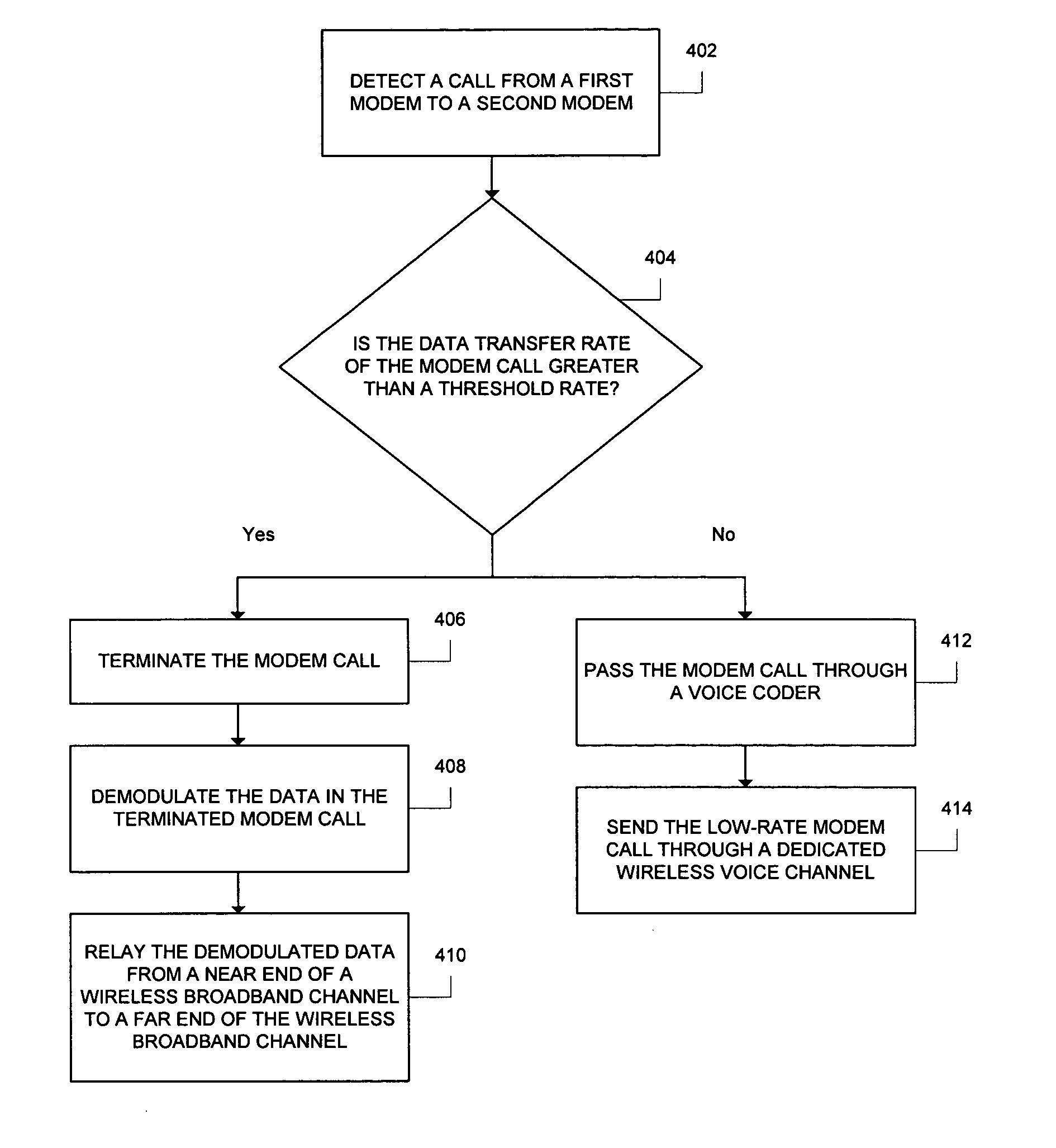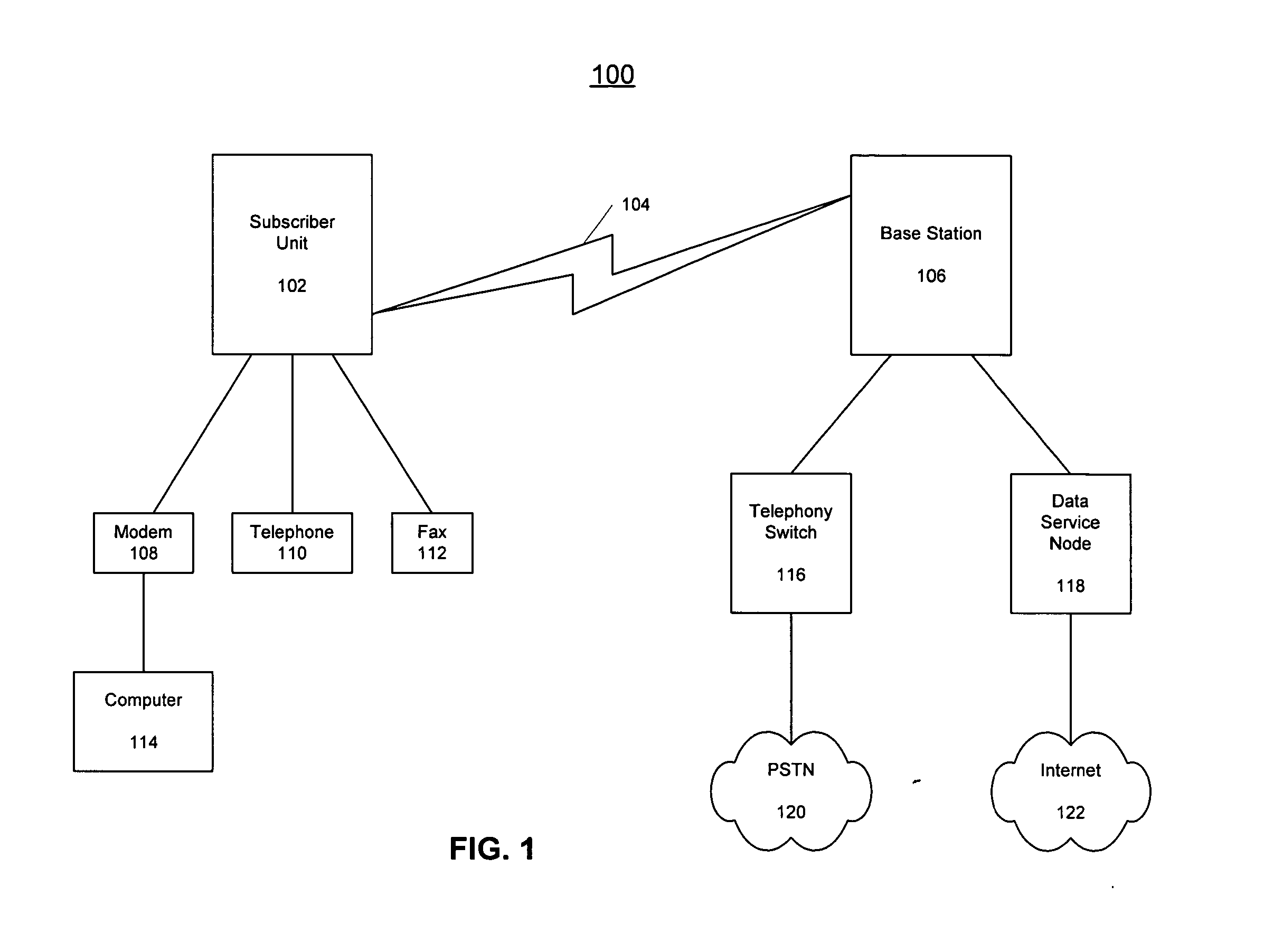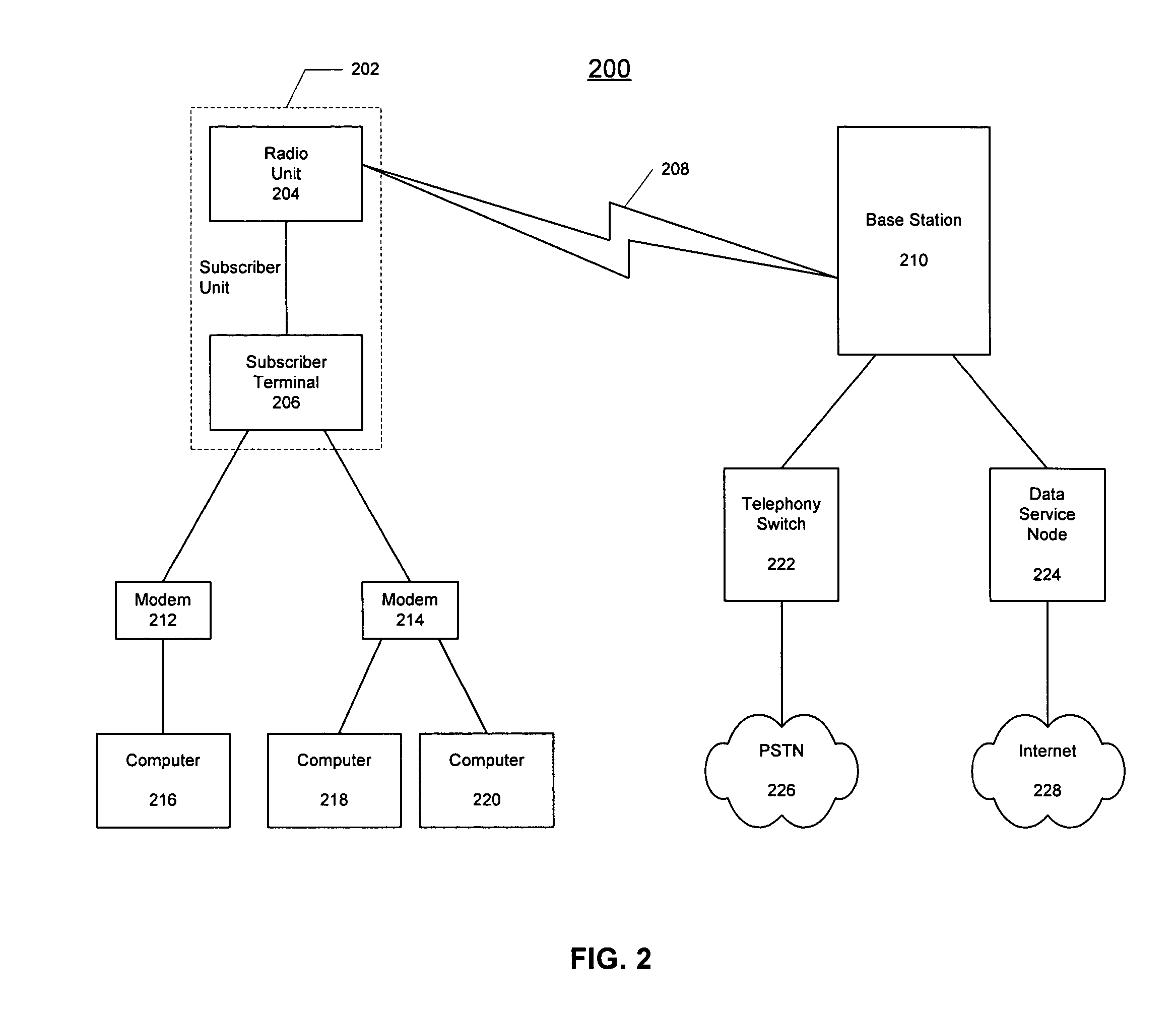Method of supporting voice-band modem-to-modem calls in a wireless communication system
a wireless communication system and voice band technology, applied in wireless communication, data switching networks, wireless communication, etc., can solve the problems of data traffic being inherently ‘burly’, data traffic being reduced with every active modem call, and significant portion of the bandwidth of the combined channel is often times wasted, so as to achieve the effect of maximizing the utilization of the resources of the wireless communication system
- Summary
- Abstract
- Description
- Claims
- Application Information
AI Technical Summary
Benefits of technology
Problems solved by technology
Method used
Image
Examples
Embodiment Construction
Support of voice-band modem-to-modem calls in a wireless communication system is disclosed. Rather than combine multiple low-rate voice channels to support high-rate modem calls, which can result in substantial reduction in system capacity, modem data is relayed over a wireless broadband channel instead. This optimizes the allocation of system resources and yields significant gains in system capacity.
FIG. 1 shows a top-level architecture diagram of a wireless communication system 100 according to some embodiments of the invention. System 100 includes a subscriber unit 102 and an airlink 104 connecting subscriber unit 102 to a base station 106. Subscriber unit 102 is connected to a modem 108, a telephone 110, and a fax 112. The connection between subscriber unit 102 and modem 108, telephone 110, and fax 112 may be via a standard RJ-11 connection. Modem 108 is, in turn, connected to a computer 114. In other embodiments, subscriber unit 102 may be connected to a different number and / ...
PUM
 Login to view more
Login to view more Abstract
Description
Claims
Application Information
 Login to view more
Login to view more - R&D Engineer
- R&D Manager
- IP Professional
- Industry Leading Data Capabilities
- Powerful AI technology
- Patent DNA Extraction
Browse by: Latest US Patents, China's latest patents, Technical Efficacy Thesaurus, Application Domain, Technology Topic.
© 2024 PatSnap. All rights reserved.Legal|Privacy policy|Modern Slavery Act Transparency Statement|Sitemap



